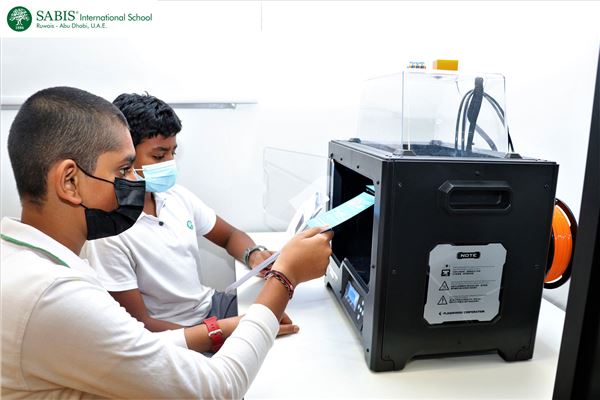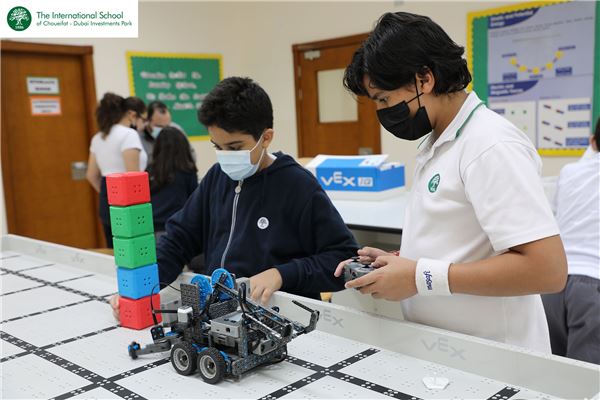Welcome to the SABIS® STEAM COURSES Catalog
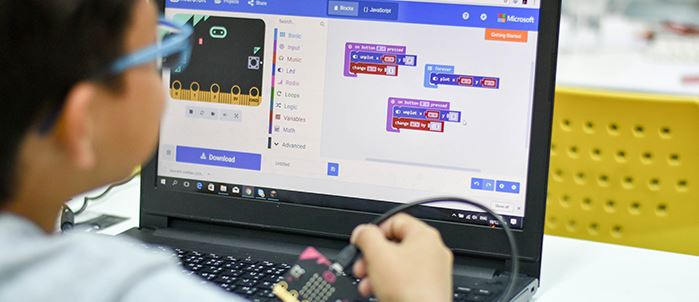
ElectroCraft Fundamentals
AvailableLevels F - H
In this course, students will learn how to develop block-based programs using Microsoft MakeCode software. Students will be introduced to coding and graphical concepts so they can produce basic programs. They will also be introduced to the components and sensors of the micro:bit and use them to write programs.
Upon course completion, students will:
- Build block-based programs with responsive components.
- Apply different coding concepts in interactive projects.
- Use sensors that interact with the surrounding environment.
No prerequisite courses are required.
After-School Club, In-Class

Robotics
AvailableLevels I,J,K
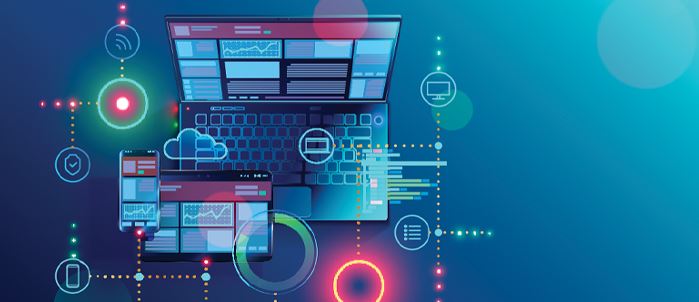
App Design and Development
AvailableLevels I - K
In this course, students will learn how to create, design, and publish applications, games, and e-tools using MIT's App Inventor platform - a development platform that makes it easy to build apps with a drag-and-drop interface. Students will also learn basic programming skills in developing Android applications which will prepare them for advanced programming courses based on Java and Android Studio with more complex tools.
Upon course completion, students will:
- Learn how to design and build basic mobile applications
- Publish and implement their applications online
- Learn how to solve real-world problems using the acquired computational thinking skills
No prerequisite courses are required.
A basic skill level in using of text editor, web browsing, using a smartphone and accessing its menu settings, and folder management is sufficient.
After-School Club, In-Class, Online
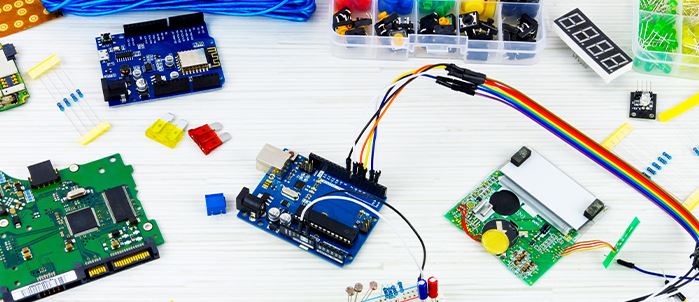
Electronics
COMING SOONLevels L - O
In this course, students will learn the fundamental principles of electronics, understand how electronic components work, and gain hands-on experience in building and troubleshooting electronic circuits.
Upon course completion, students will:
- Recognize the basic concepts of electricity and identify different electronic components (resistors, capacitors, etc.)
- Develop scientific knowledge and conceptual understanding of the behavior of analogue and digital electronic circuits
- Learn how to solder and work with breadboards and PCBs
- Design circuits and perform different circuit analysis techniques
No prerequisite courses are required.
After-School Club, In-Class
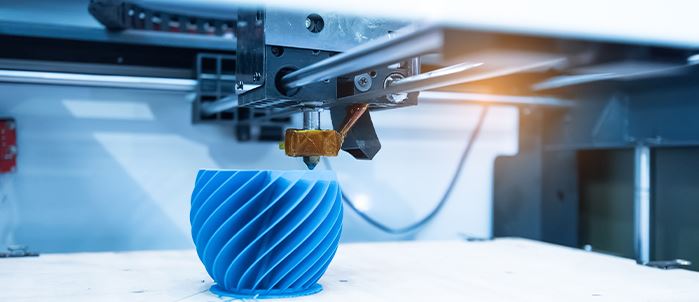
3D Printing
AvailableLevels L - O
In this course, students will learn the theoretical and practical knowledge of the transformative 3D printing technology for the future of design, architecture, and engineering. Students will be introduced to the fundamental materials and engineering science, best-known practices, and use of CAD software to aid in the creation, analysis, and optimization of 3D printing. In-depth lectures and class discussions with exciting projects will unlock the potential in every student to create, innovate, and fabricate.
Upon course completion, students will:
- Learn how to 3D print a fully functional part
- Understand the advantages and limitations of 3D printing
- Explain current and emerging 3D printing applications
- Identify opportunities to apply 3D printing technology
No prerequisite courses are required.
After-School Club, In-Class
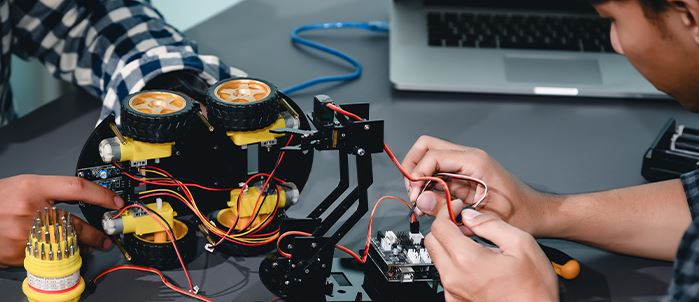
Advanced Robotics
AvailableLevels L - O
In this course, students will build and design advanced robotics systems from scratch using Raspberry Pi and a wide range of sensors and actuators. Students will program the robots using Python programming language to perform data reading, capture images, solve complicated tasks, and overcome challenges by fully controlling and programming each of the robotics components such as the control unit and sensors.
Upon course completion, students will:
- Learn about the different hardware and software components that make up a robot, including sensors and actuators, control unit, and the program that operates it
- Recognize how to design a robot and understand advanced concepts such as control theory and computer vision
- Be exposed to engineering and design practices through building solutions to real-world problems (such as autonomous vehicles), implementing problem-solving strategies, and being productive in a teamwork environment
Computing Level K
After-School Club, In-Class
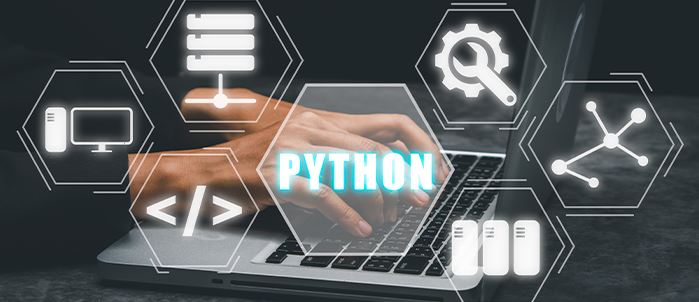
Programming Using Python
AvailableLevels L - O
In this course, students will learn fundamental programming concepts including conditional execution (loops, branching, try/except), functions, built-in data structures (lists, dictionaries, and tuples), and retrieving data from websites and APIs using Python, one of the most popular and widely used programming languages in web development, machine learning, and data science.
Upon course completion, students will:
- Accomplish multi-step tasks like sorting or looping using tuples
- Create programs that can read and write data from files
- Retrieve data from websites and APIs
No prerequisite courses are required. A beginner skill level in programming might help but is not mandatory.
After-School Club, In-Class
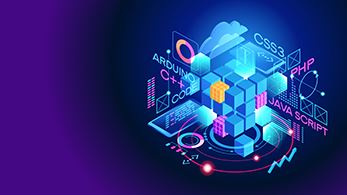
Web Programming
AvailableLevels I – K
In this course, students will learn how to use Hypertext Markup Language (HTML) and Cascading Style Sheets (CSS) – the basic programming languages for web development and design – to create and streamline their websites. In addition, students will be introduced to JavaScript basics, so they can enhance their websites with dynamic content.
Upon course completion, students will:
- Learn basic and advanced HTML skills
- Learn advanced programming topics using JavaScript
- Implement complete projects using HTML and JavaScript
No prerequisite courses are required. A basic skill level in using text editor, web browsing, and folder management is sufficient.
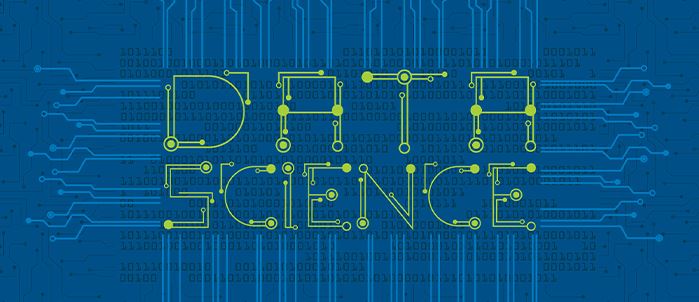
Data Science
AvailableLevels L - O
This course provides a comprehensive introduction to data science, covering its history, significance, career pathways, and ethical aspects. Students will utilize tools like Pandas and Matplotlib to manage and process data, including handling CSV files, applying descriptive statistics, and mastering data preprocessing. Emphasis will be placed on machine learning techniques such as regression, classification, and clustering models. Participants will engage in real-world projects, explore evaluation metrics, and work with Scikit-learn in practical scenarios, gaining essential skills to manipulate data and develop basic machine learning models across various industries.
Upon course completion, students will:- Understand the basics of data science and its applications.
- Handle, process and visualize data efficiently.
- Learn Machine Learning concepts and implement basic models.
- Strengthen their capability to address complex data science issues and create effective solutions.
- Apply real-world projects and case studies from various domains.
Computing Level K.
After-School Club, In-Class, Online

Cryptography
AvailableLevels L - O
This course provides a comprehensive introduction to the field of cryptography, covering its historical development, fundamental principles, and modern applications. Students will learn about various types of ciphers, including substitution and polyalphabetic ciphers, and delve into advanced topics such as symmetric and asymmetric encryption, public and private keys, and the RSA algorithm. The course also addresses the importance of digital signatures, hash functions, and best practices for online safety and cyber hygiene. Practical applications of cryptography in everyday life, such as in messaging applications and e-commerce, are also explored.
Upon course completion, students will:- Understand the basics and importance of cryptography.
- Explore basic encryption and decryption techniques.
- Differentiate between symmetric and asymmetric encryption.
- Understand public and private keys and the RSA algorithm.
- Learn about digital signatures and hash functions.
- Learn about cryptography in e-commerce and online payments.
Computing Level K.
After-School Club, In-Class, Online
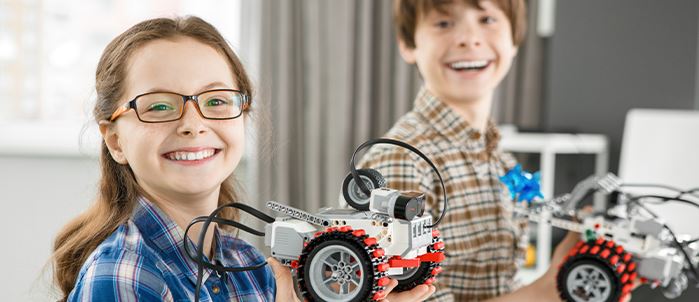
Robotics I
AvailableLevels I - K
Robotics integrates the interdependent disciplines of Science, Technology, Engineering, Arts, and Math (STEAM), in which students learn core computer programming logic and computational thinking skills through a robotics-engineering context. Students will program, construct, and design robotic devices to solve complex tasks and overcome challenges. Also embedded is problem-solving, design, creativity, group collaboration, and critical thinking skills that are relevant for students' continued development of 21st-century skills.
In this course, students will construct and program basic robotic systems that carry out physical tasks autonomously and manually using smart sensors.
Upon course completion, students will:
- Learn the basic and intermediate concepts of programming from commands and sequences to loops and decision-making structures
- Be exposed to engineering practices through building solutions to real-world problems, implementing problem-solving strategies, and being efficient in a teamwork environment
No prerequisite courses or prior robotics experience is required.
After-School Club, In-Class
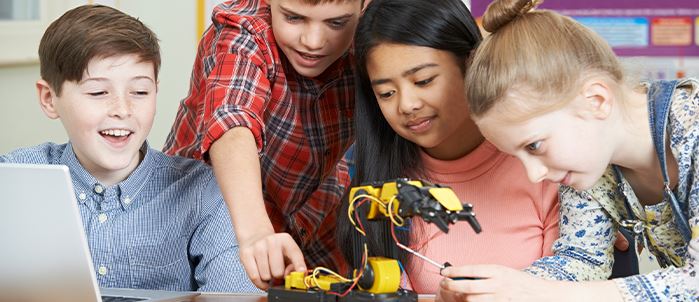
Robotics II
AvailableLevels I - K
In this course, students will program and navigate robotic systems through complicated tasks and challenges using advanced programming concepts, such as loops, conditional statements, and repeated decisions, and customized remote-controller settings for efficient and optimized operations.
Upon course completion, students will:
- Learn the basic and intermediate concepts of programming from commands and sequences to loops and decision-making structures
- Be exposed to engineering practices through building solutions to real-world problems, implementing problem-solving strategies, and being efficient in a teamwork environment
Robotics I
After-School Club, In-Class

Robotics III
AvailableLevels I - K
In this course, students will design, program, and engineer complex, dynamic robotic systems such as robot arms and omni-directional robots. Students will learn about 3-dimensional space and mechanical systems to model the task of delivering a payload to a specified location and to autonomously and efficiently navigate in the presence of obstacles.
Upon course completion, students will:
- Learn the basic and intermediate concepts of programming from commands and sequences to loops and decision-making structures
- Be exposed to engineering practices through building solutions to real-world problems, implementing problem-solving strategies, and being efficient in a teamwork environment
Robotics II
After-School Club, In-Class
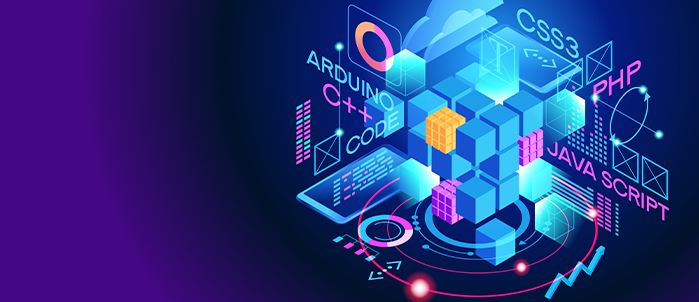
Web Programming I
(FRONT-END DEVELOPMENT)
Available
Levels L - O
This course offers a comprehensive introduction to web development using HTML, CSS, and JavaScript. Students will learn to structure web content with HTML, style and format elements using CSS, and add interactivity with JavaScript. Additionally, students will explore CSS animations, transitions, and techniques for ensuring cross-browser compatibility. Emphasis is placed on best practices for writing clean, maintainable, and accessible code, equipping students with the skills needed to create dynamic and visually appealing web pages.
Upon course completion, students will:- Understand the fundamentals of HTML for structuring web content.
- Learn CSS for styling and formatting HTML elements.
- Explore responsive design principles to ensure websites adapt to various devices.
- Gain basic knowledge of JavaScript programming, including variables, data types, and functions.
No Prerequisite courses are required.
After-School Club, In-Class, Online
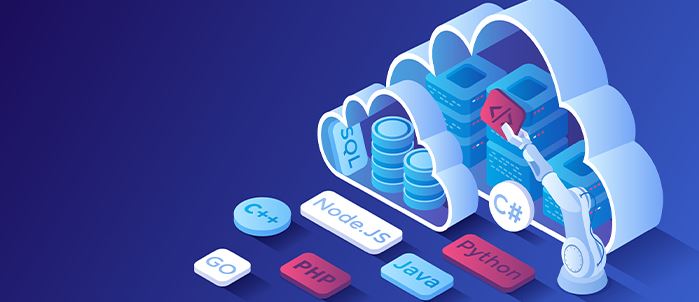
Web Programming II
(Back-end Development)
Available
Levels L - O
This course provides a thorough introduction to web development using PHP and MySQL. Students will learn to install and configure both PHP and MySQL, and develop dynamic, database-driven web applications. The course covers essential PHP syntax and programming concepts, as well as database creation and manipulation using MySQL. Students will learn to integrate PHP with HTML to create interactive web pages.
Upon course completion, students will:- Understand the fundamentals of PHP and MySQL.
- Learn to install and configure PHP and MySQL.
- Understand PHP syntax and basic programming concepts.
- Learn to create and manipulate databases using MySQL.
- Integrate PHP with HTML to create interactive web pages.
Web Programming I.
After-School Club, In-Class, Online
TESTIMONIALS
